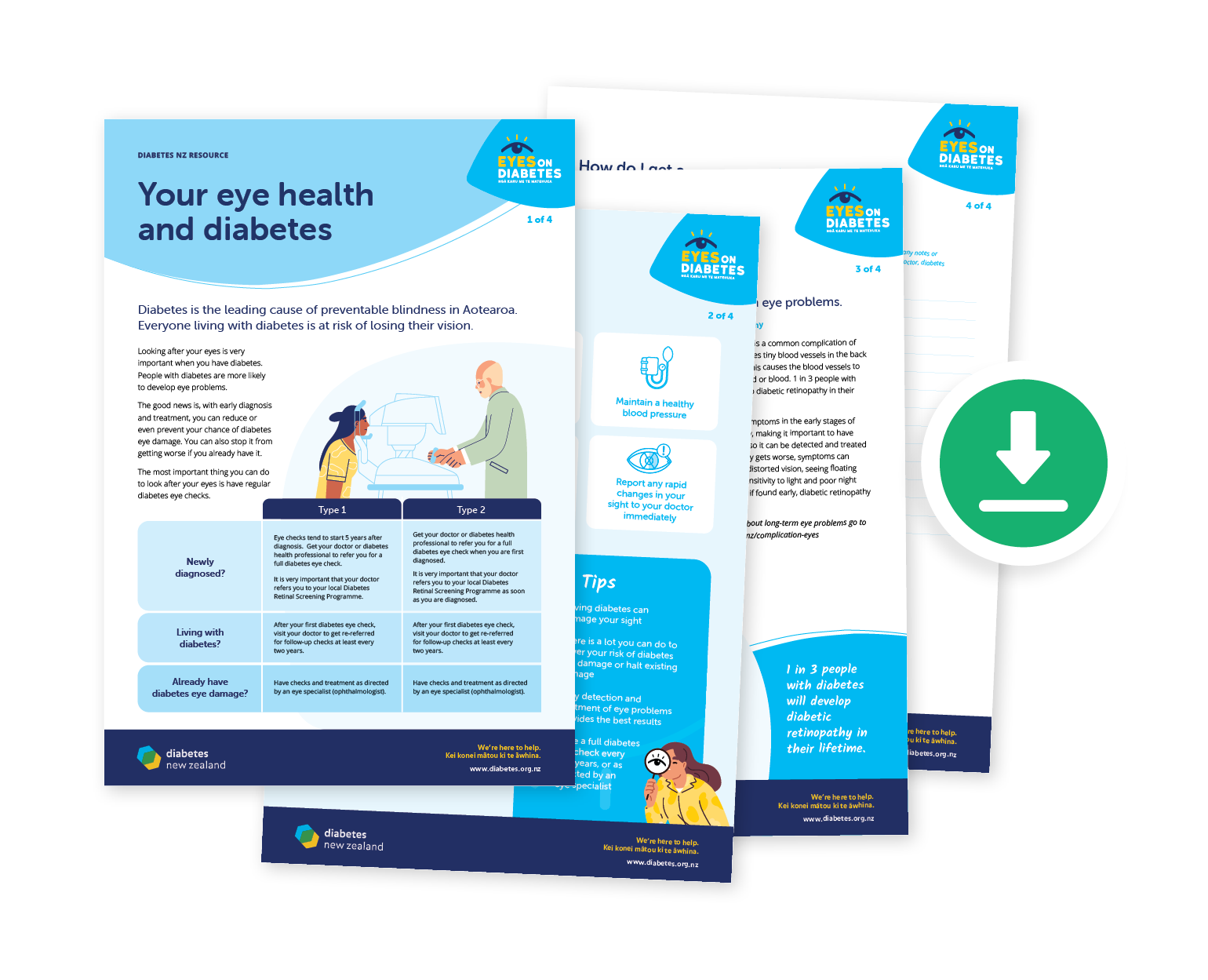


Vision loss can be very difficult to accept, and for those living with diabetes it can have a huge impact on their quality of life. Much of the day-to-day management of diabetes relies on your eyesight, to administer insulin, monitor glucose meds, and check for feet or skin issues. Any loss of sight can indicate the progression of diabetes, and other complications from that become more likely.
The good news is that there are steps you can take to lower your risk of eye damage, including managing your diabetes and having regular eye checks at least every two years. With early diagnosis and treatment, eye damage can be reduced or even prevented.
Common eye conditions for those with diabetes
Eye conditions that are often experienced by those with diabetes include diabetic retinopathy, glaucoma and cataracts. One in three people with diabetes will develop diabetic retinopathy in their lifetime, which damages the tiny blood vessels in the back of the eye (retina). This causes the blood vessels to weaken and leak fluid or blood.
Symptoms of declining eye health
A common sign of diabetes starting to impact your eye health is when high blood glucose levels cause your vision to blur temporarily, due to a change in shape of the eye lens. Blurred vision can occur prior to a diabetes diagnosis, when starting a new treatment, or when blood glucose levels fluctuate quickly.
Other recognisable symptoms of eye conditions include seeing double, feeling pressure in one or both of the eyes, less peripheral vision, seeing floating spots or flashes, sensitivity to light and poor night vision.
How to prevent damage to your eyes
The crucial step to prevent eye damage is booking in for regular full diabetes eye checks at least every two years, or as directed by your doctor or eye specialist.
However, maintaining healthy blood glucose levels, healthy cholesterol and blood pressure as part of your ongoing management of your diabetes is important. Working toward quitting smoking is also recommended. Lastly, stay vigilant and report any rapid changes in your sight to your doctor or eye specialist immediately.
How you can help during Diabetes Action Month
This November, we’re calling on New Zealanders living with diabetes to get their eyes checked. Don’t wait to experience symptoms, as often the signs won’t present themselves until eye conditions have progressed to a later stage. Booking in an eye test at least every two years is recommended, however your doctor, optometrist or eye specialist will be able to tell you if you need to have your eyes checked more frequently. It’s important that your doctor refers you to your local free Diabetes Retinal Screening Programme.
Plus, there will be a number of Diabetes NZ initiatives taking place during November including Facebook Live sessions, local events, the return of Sneaker Friday, as well as a new eye health resource available to share with your friends, family and community.
